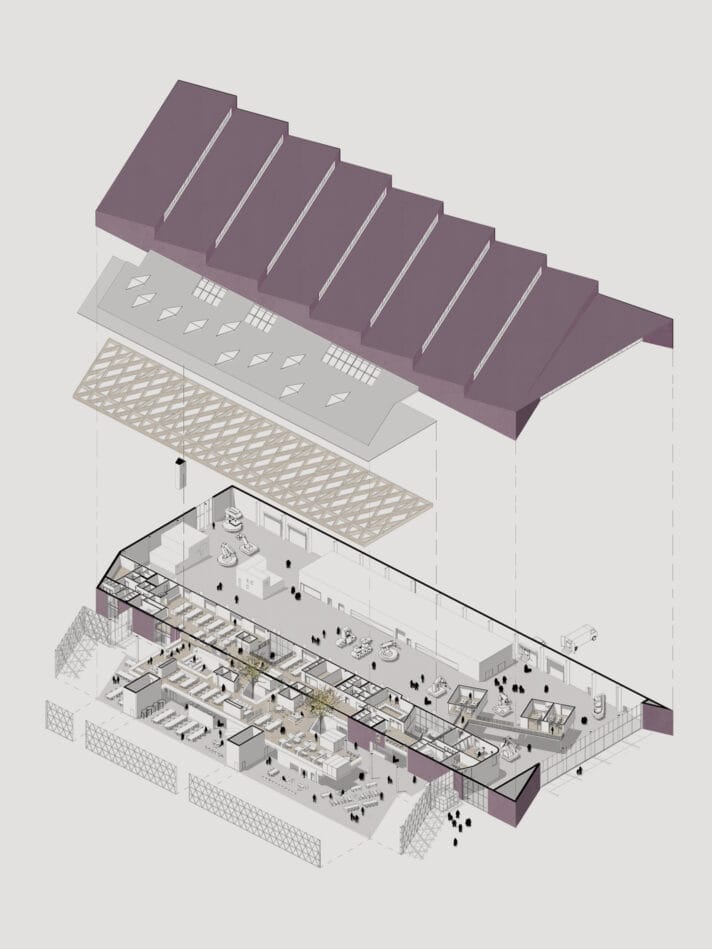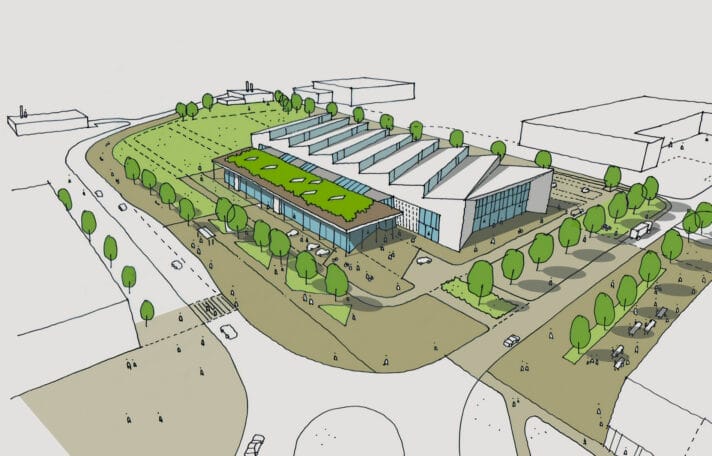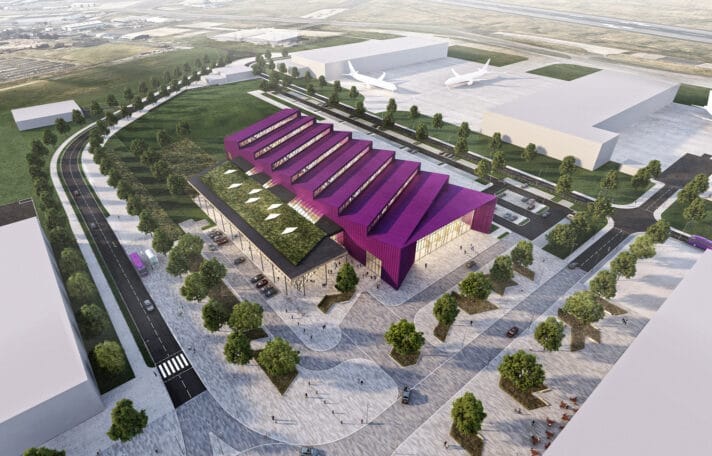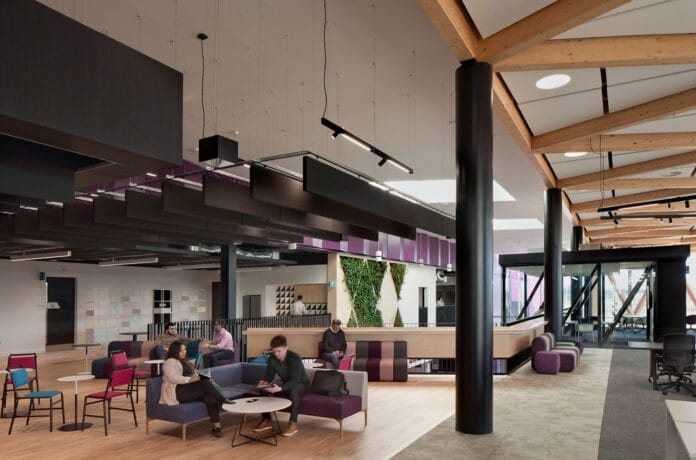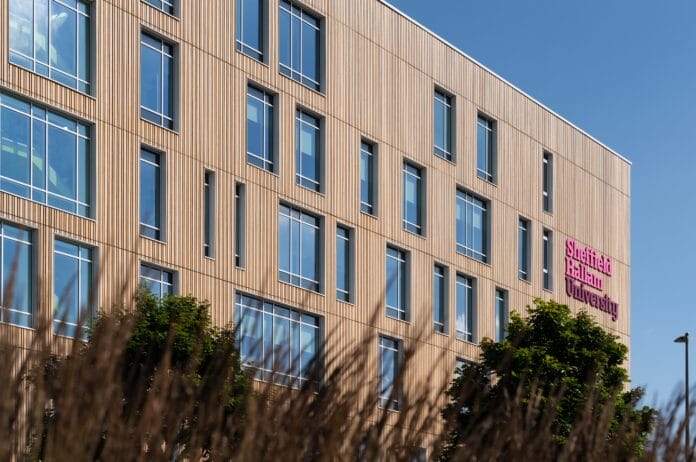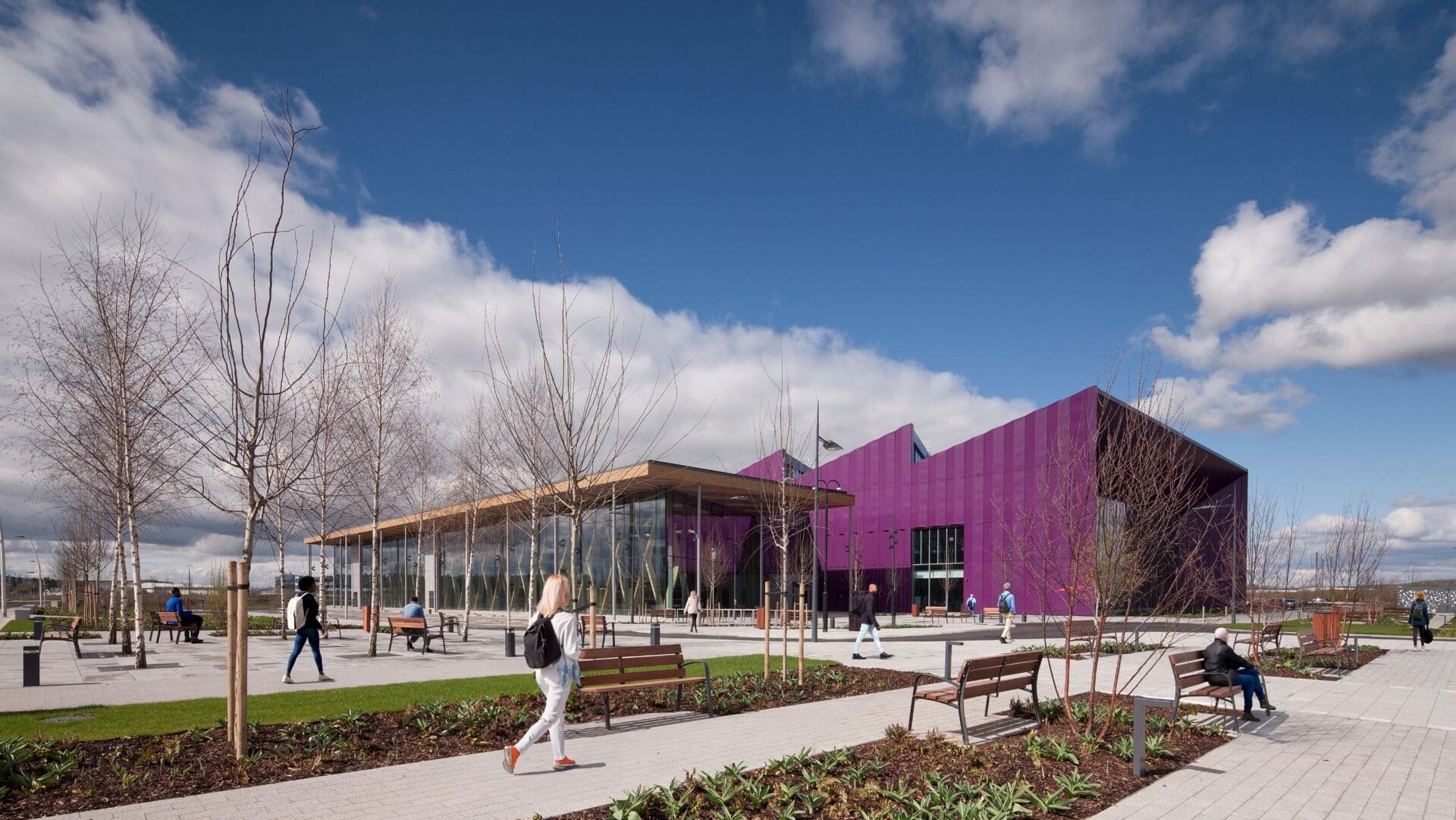
The National Manufacturing Institute Scotland is an industry-led international centre of manufacturing expertise where industry, academia and the public-sector support bodies work together to transform skills, productivity and innovation making Scotland a global leader in advanced manufacturing and a magnet for investment.
Design Approach
In essence, this facility is about creating an open and collaborative environment where knowledge and creativity can be shared. Located at the heart of the new Advanced Manufacturing Innovation District Scotland (AMIDS), it should act as a catalyst for future development attracting world leading companies and institutions involved at the cutting edge of advanced manufacturing.
The new, energy carbon neutral facility based at the new Netherton Campus next to Glasgow Airport will provide a high-quality environment that supports healthy working, fosters collaboration and promotes sustainability.
NMIS is a partnership between University of Strathclyde, the Advanced Forming Research Centre, High Value Manufacturing Catapult, Skills Development Scotland and Scottish Enterprise, and will comprise four principal elements:
- The Digital Factory 2050 (DF2050) – Industry led centre for collaborative manufacturing research, technology and solution development.
- The Innovation Collaboratory (IC) – Industry-led centre for manufacturing technology application and process development.
- The Manufacturing Skills Academy (MSA) – Scotland’s hub for manufacturing skills and education linking to existing and future providers.
- The “Forum” – NMIS interface with the wider GAIA site plus access to on-site financial advice, business support and links to external organisations such as schools, Zero Waste Scotland, Scottish Institute for Re-Manufacture and the One Scotland Partners.
At the very core of the building, “The Forum” plays three distinct roles. First, it will be the NMIS interface to associated business support services and will be the gateway through which NMIS’s specialisms can interact with external groups. Second, it will host providers of on-site financial advice and business support through providing links to external organisations such as schools, Zero Waste Scotland, Scottish Institute for Re-Manufacture and the One Scotland Partners
Third, it will provide a “meeting point” for residents of the AMID site, where they can collaborate, meet and network with each other and with NMIS staff. It will have a work café, bookable meeting spaces and other network supporting facilities.
NMIS has been designed as a collaborative space where other universities, companies and entrepreneurs can come together to do short-term innovative projects up to prototype stage. There will be shared access to a number of specialist areas including a large flexible machine shop, laboratory, robotics and automation, composite manufacturing area (including clean room), electrical/electronics laboratory, metrology, exhibition room, clean working areas to assist photonics and quantum system manufacturing, as well as open plan office space and dedicated meeting spaces large enough to support up to 90 research staff. This will become a key meeting place for industry and academics – an incubator for small companies and start-ups, providing office and workshop space for manufacturing and complementary sectors.
NMIS is set to be one of Scotland’s leading institutes, and is designed to operate without the use of fossil fuels for its energy generation. Instead, it prioritises passive measures, low u-values and energy efficiency, making use of 100% renewable energy generated onsite. Enabling infrastructure means that the building can connect with a larger, site-wide district heating network once realised, which will supplement the extensive rooftop PV array and network of Ground Source and Air Source Heat Pumps.
The development exemplifies the University’s vision and values, and innovates in all that it does. Its design delivers a range of climate mitigation and adaptation solutions, including rain gardens, rainwater harvesting, SUDS and a green roof to encourage biodiversity. The building seeks to create a high-quality, healthy workplace with extensive natural daylight, an exposed timber glulam frame, internal tree planting, and a bespoke internal green wall.
Aligning the wider AMIDS site’s sustainability objectives, NMIS seeks to be innovative, ambitious and bold in creating a sustainable building using clean, low carbon infrastructure to meet the climate action ambitions of the University, Renfrewshire Council, Scottish Enterprise and the Scottish Government. The University has also committed to a BREEAM Outstanding target and an EPC ‘A’ rating for the new building.
